Chinese cabbage: description, photo, cultivation and storage
Chinese cabbage has gained popularity among gardeners due to its unpretentiousness, cold resistance and high yield. Her leaves are softer than those of white cabbage, and the content of proteins and minerals is almost twice as high. We will tell you about the features of the species and varieties of "Asian", as well as how to grow a vegetable on your own, in this article.
The content of the article
Description of Chinese cabbage
The botanical name Chinese cabbage (Brassia rapa) unites annual and biennial herbaceous species from the Cruciferous (Cabbage) family, whose homeland is China.
The culture, resistant to pests and cold, does not form a head of cabbage, but is a large erect leaf rosette with a diameter of 40-45 cm and a height of 20 to 50 cm, semi-spreading or compact.
Delicate leaves of a rounded shape are either blistery or smooth. They are located on juicy green or white petioles, smoothly turning into a pronounced central leaf vein. The color of the leaves, depending on the variety, varies from various shades of green to purple.
Small yellow or white flowers are found on long peduncles, and the fruits are short pods that crack easily when ripe. The seeds are used to make oil.
The plant has a superficial root system located approximately 15 cm from the soil surface.
The crop is characterized by a short growing season, so that early-maturing varieties can be harvested as early as 3 weeks after germination.
Attention! Due to its spicy taste, "Chinese woman" is also called mustard or celery. Another type of Asian cabbage, which has some differences from leafy cabbage, is often referred to as Chinese - Beijingforming a head of cabbage.
In the photo - Chinese cabbage.
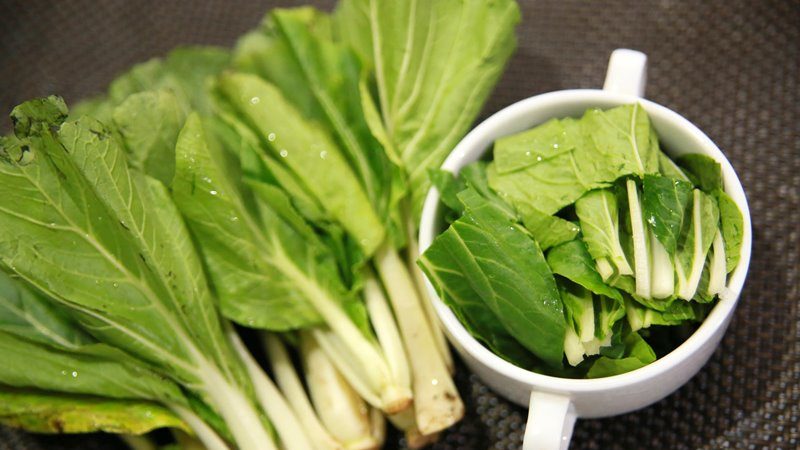
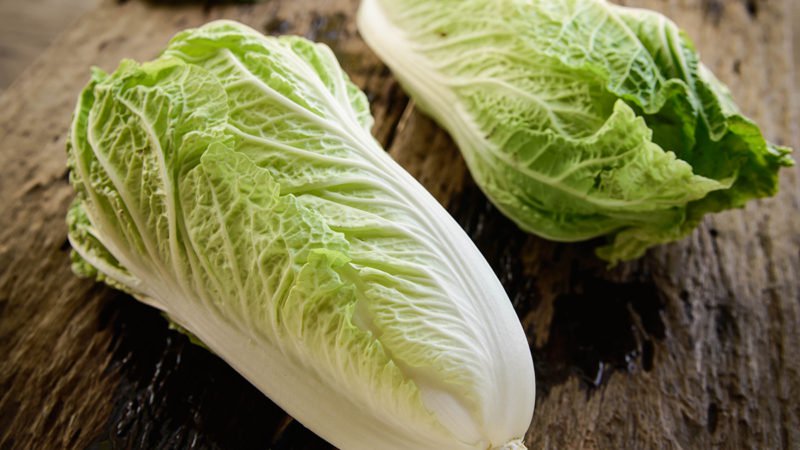
How to grow Chinese cabbage
Cultivation of culture does not require much effort - the plant is frost-resistant and high-yielding, it is perfectly stored and is rarely damaged by insects due to the high content of essential oils.
Where to grow
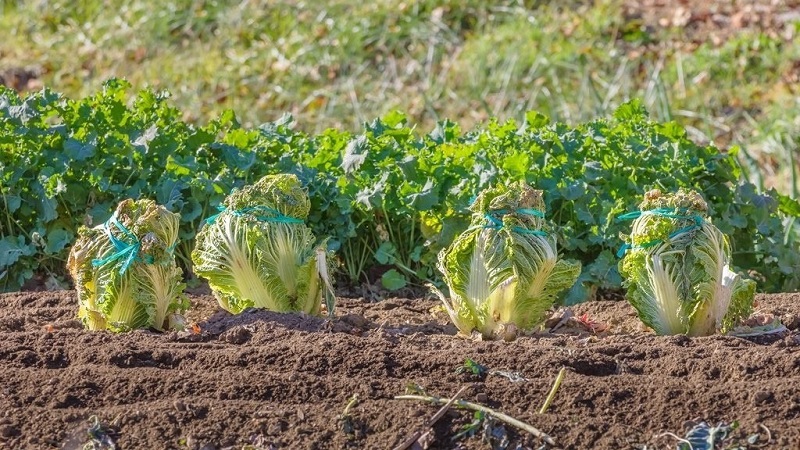
Chinese cabbage reacts negatively to transplants and temperatures below + 15 ° C when shoots appear, which is why it is better to plant it immediately in open ground under a film.
Reference. In heated greenhouses, crops grow throughout the year.
For the successful development of a plant, a fertile, loose, moist (but not swampy) soil with low acidity and high organic content is needed. Loams are great.
The best predecessors in the garden:
Planting the plant after other cruciferous plants (radish, radish or cabbage) is not recommended.
The place for planting this light-loving culture is chosen well-lit, but light shading is also acceptable. The east or west side of the site is best suited, protected from drafts.
Optimal temperature conditions for the normal development of cabbage are + 15 ... + 20 ° С.
Landing
Landing takes place in late April or early May. Sowing later (late May - early June) will result in a flower arrow. To get an autumn harvest, the plant is planted in open ground in mid-August.
Important! During planting of Chinese cabbage, the air temperature should be at least + 15 ° C.
Preparation for planting and the process itself:
- A few days before planting, the seeds, wrapped in cloth or gauze, are soaked in warm (+ 40 ... + 50 ° C) water for 15-25 minutes.
- Then for 1-2 minutes immersed in cold water, and then kept for 12 hours in a solution of the biostimulator "Epin" containing minerals.
- To prevent fungal diseases, seeds are treated with a solution of biofungicide. It can be "Fitosporin-M", "Topaz" or another drug.
- For every 1 m² of soil, ½ a bucket of humus, 2 tbsp. l. superphosphate, 1 tbsp. l. potassium sulfate, 1 tsp. urea.
- If necessary, liming of the soil is carried out.
- The land is loosened before sowing and then leveled.
- Small holes are made at a distance of 30 cm from each other, maintaining a distance between the rows of 0.5 m.
- The soil is well moistened.
- Seeds are buried 1.5-2 cm, placing 2-3 pieces in each hole.
- The beds are sprinkled with ash, protecting crops from pests, and insulated with a covering material from recurrent frosts.
When grown through seedlings, the seeds are sown in peat tablets with a nutrient mixture (for example, with a coconut substrate, adding a little crushed ash or chalk to it), so as not to remove the seedlings from the pots later, but to plant them in the ground together with them without damaging the roots.
Containers with crops are covered with foil or glass and placed in a dark place until shoots appear, and then placed on the windowsill on the south or east side. The substrate is kept moist.
When 5 true leaves appear (after 15-17 days), the seedlings are planted in open ground.
To improve the adaptation of plants, it is recommended to harden one week before planting, leaving the seedlings in the open air for a short time at first, gradually extending it to 12-14 hours.
So that by the end of April the seedlings are ready for planting, the seeds are sown in March. When growing a plant in a greenhouse, this is done in February, then in March you can transplant seedlings into the ground.
Care features
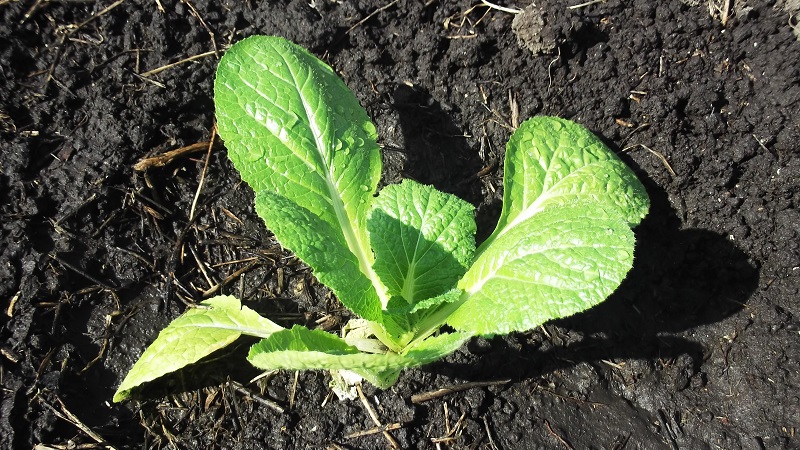
When 1-2 true leaves appear on the sprouts, no more than one copy is left in each hole, pinching the weak ones.
Culture care includes the following activities:
- Watering. Due to the superficial root system of the plant, the soil under it should not dry out, but it must be kept moderately moist, watering abundantly once a week. This is done in the morning or in the evening, preferably in cloudy weather, making sure that no water gets on the leaves and provokes the appearance of dry yellow spots.
- Top dressing. At the beginning of spring, natural or complex mineral fertilizers are introduced into the soil: 1 part mullein, 10 parts water, 1 tbsp. sifted wood ash on a bucket of finished fertilizer.
- Loosening row spacing after watering and rains.
- Weed removalslowing down the growth of culture.
- Mulching the soil around the bushes with sawdust, hay or straw to prevent moisture evaporation and the growth of weeds.
- Preventive measures against diseases and pests. In rare cases, a lesion-resistant crop can be damaged by a cruciferous flea or aphid. Once a week, the plant itself and the soil around it are powdered with black pepper or a mixture of wood ash with tobacco dust (1: 1). When slugs or egg clutches of white butterflies appear on the leaves, they are removed and destroyed.
It is not necessary to spud the plant. It is necessary to ensure that the apical kidney is not covered with earth.
When to clean up
The crop is harvested as the crop matures, usually 3 weeks after germination. Vegetables planted in April ripen in August, and those planted in June are harvested in October. This is done in the early morning, when the plant is maximally saturated with moisture, in dry warm weather.
The collection is carried out in two ways:
- Young leaves are cut at a distance of 2-3 cm from the root, and more mature ones are slightly higher.
- With a sharp disinfected knife, the rosette is completely cut off, and then the roots are removed.
How to save Chinese cabbage for the winter
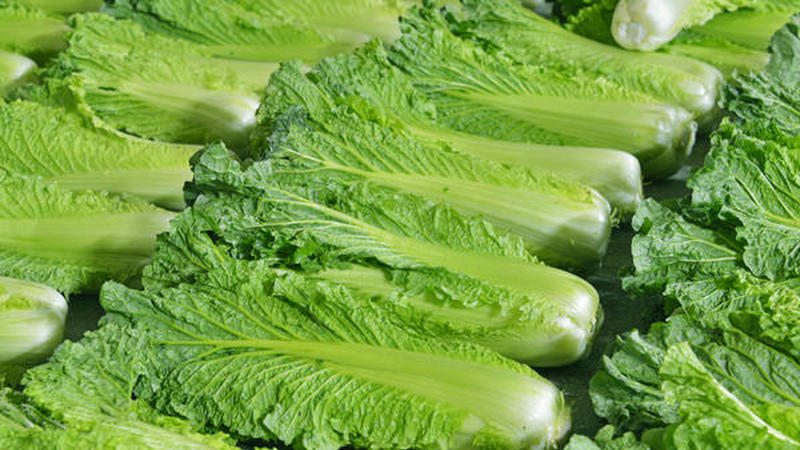
Vegetables are best eaten immediately, raw, stewed or cooked. If long-term storage is required, proceed as follows:
- The cabbage harvested in August is rinsed to remove dirt.
- Dried, packed in cling film.
- Store in the refrigerator for 2 weeks.
Autumn harvest can be stored longer - up to 3-4 months. For this:
- Select undamaged sockets.
- Wrapped in cling film.
- Placed in wooden or plastic boxes.
- Store in a cool, well-ventilated room at a temperature of + 1 ... + 3 ° C and an air humidity of 80-90%.
For a longer storage, the vegetable can be frozen or dried, as well as pickled or salted.
Types and varieties of Chinese cabbage
In the course of many years of work, breeders have bred many varieties of Chinese collard, among which are distinguished:
- early maturing - with a growing season of 35-55 days;
- mid-season, ripening in 55-60 days;
- late, which are harvested in 60-80 days.
In case of insufficient watering, overheating or lack of lighting, a problem arises: the "Chinese woman" begins to bloom and form arrows. To avoid this will help the choice for planting hybrid varieties resistant to shooting and flowering. These include:
- Peahen.
- Swan.
- Manoko.
- Champion.
- Optical.
- Custar.
- Gilton.
- Bilko.
- Miraco.
Leafy bok-choy
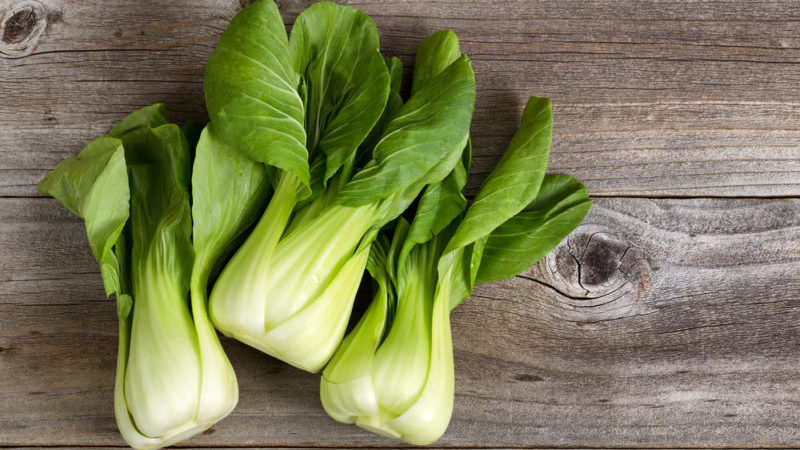
The large and juicy dark green leaves of bok choy cabbage (Brassia rapa chinensis) taste like arugula. They are located on thick white petioles collected in a rosette.
This biennial plant with poorly developed roots produces a flower arrow in its second season. The vegetable is distinguished by early ripening, resistance to cold and pests, high productivity and low calorie content.
Swallow, or pak choy

This early maturing, ultra-high yielding kale variety matures 35-45 days after germination. Two-thirds of the plant, the weight of which can reach 3 kg, falls on fleshy juicy white petioles, tightly adjacent to each other.
The rosette of this variety is half-raised, and the green leaf plates are smooth and solid.
Reference. The swallow practically does not undergo shooting and has a very delicate taste.
Beijing
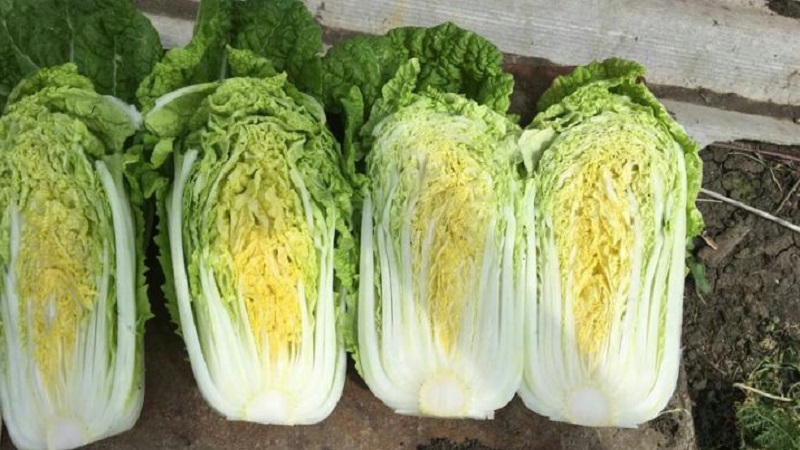
This type of "Asian" is called Chinese salad. The plant is collected in an elongated loose head of cabbage white stems with wide leaves, the color of which varies from yellowish to bright green.
The core of the head of cabbage is used for making soups and marinades, and salads are made from fresh leaves.
Red
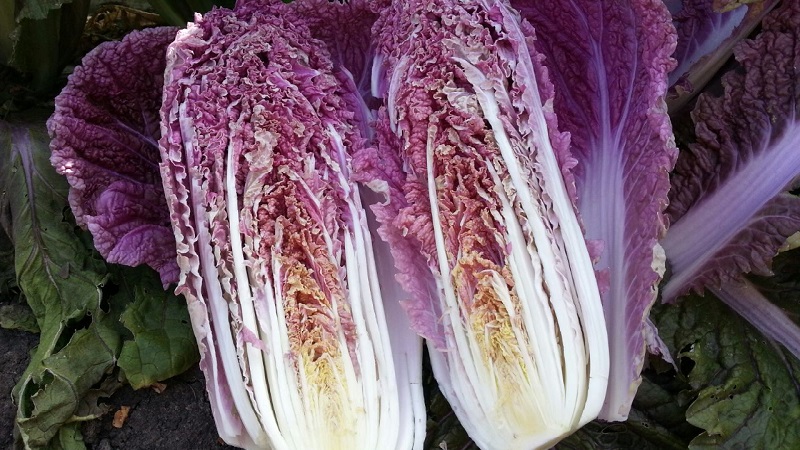
The variety of Chinese cabbage Red Choi ripens 45-55 days after germination and differs from others in high aesthetics: the back of the leaves is colored green, and outside they are reddish-purple.
The rosette of Red Choi is semi-spreading, with small, slightly concave green petioles. Oval leaf plates with slightly wavy edges are covered with a thin layer of waxy coating. The plant reaches a height of 20-30 cm, and its maximum weight is 450 g.
The yield is low, but the taste is especially delicate, with a spicy pungency.
Conclusion
An unpretentious Asian guest can be grown in his own garden or garden plot, choosing varieties to taste and observing simple rules of agricultural technology. The reward for the work will be a bountiful harvest of tasty, nutritious, juicy and very healthy vegetable, rich in vitamins and minerals.